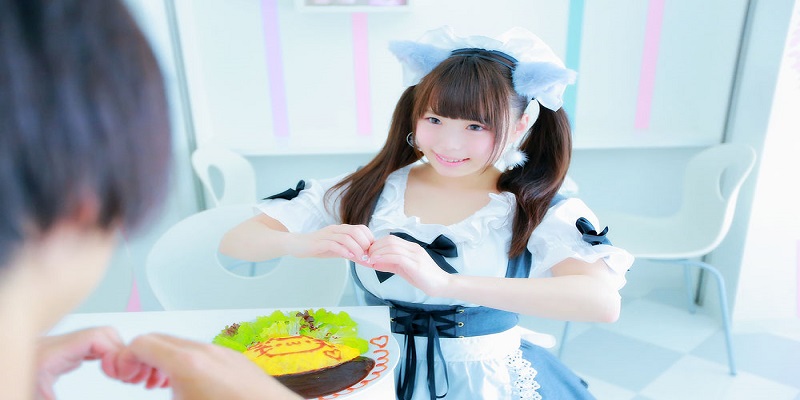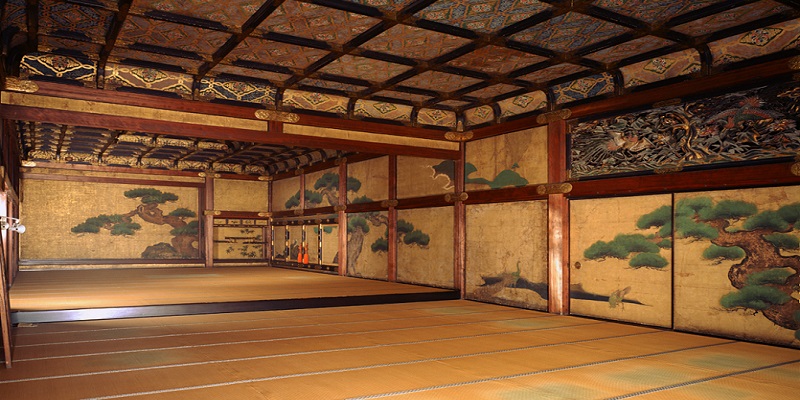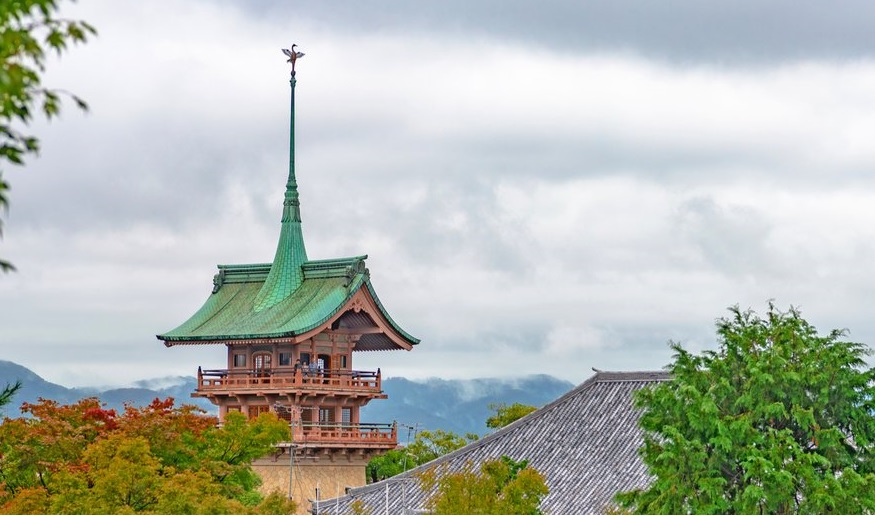It is 150 years anniversary in 2017 since the Restoration of Imperial Rule when the Tokugawa Shogunate met its end.
The stage of it was the Nijo-jo Castle, the World Heritage.
Since it does not have even the castle tower, although it is not distinctive existence in visual, it is the one of the best sightseeing spots of Kyoto, where many tourists visit each and every day.
Let me guide you thoroughly charms of such Nijo-jo Castle.
Contents
The witness of prosperity and decline of the Tokugawa family was Nijo-jo Castle
 image by nijo-jocastle.city.kyoto.lg.jp
image by nijo-jocastle.city.kyoto.lg.jpNijo-jo Castle, Kyoto’s pride and the World Heritage, was started building in 1603 (Keicho 8) as an accommodation when Ieyasu Tokugawa entered to Kyoto.
Though it is famous that the Restoration of Imperial Rule, which tells the end of the Tokugawa Shogunate, was announced in Nijo-jo Castle, when Ieyasu Tokugawa was appointed as Seii Tai Shogun, it was also Nijo-jo Castle where he held celebration in a large scale, inviting senior vassals and nobles.
In short, it was the place not only of end of the Edo Period, but also of the beginning.
And around the period of the third Shogun Iemitsu, Emperor Go-Mizuno visited Nijo-jo Castle.
The prosperity of the Tokugawa family was made known in the whole country by such magnificent visit that lasted for five days.
In this way, Nijo-jo Castle had seen through the beginning, the peak, and the end of the Edo period.
Such Nijo-jo Castle appears also at turning point of the history.
In 1611 (Keicho 16), Ieyasu Tokugawa and Hideyori Toyotomi had a meeting at Ninomaru Palace, Nijo-jo Castle.
At that time, it is said that surprised by Hideyori’s growth, Ieyasu decided to destroy Toyotomi Clan.
So to speak, it can be said that it is the place of origin of Osaka Siege.
By the way, it was written in “the Meiryo Kohan historical records”, which is anecdotes and essays of the middle of the Edo Period, and it says that a height of Hideyori was 196 cm and weight was 160 kg!
He was recorded as an unbelievable giant, and it is said that Ieyasu feared also charisma that was emitted from such giant.

Cultural Treasure, Karamon Gate, is Point to See in Nijo-jo Castle


The original shape of today’s Nijo-jo Castle was established by major renovation for several years by the third Shogun, Iemitsu, for the purpose of inviting Emperor Go-Mizunoo to Nijo-jo Castle.
It was Ieyasu who started building, but it can be said that it was Iemitsu who finished.
Karamon Gate as the main gate of the national treasure, Ninomaru Palace, is the important cultural treasure, it was also established for the visit of Emperor Go-Mizunoo.
Karamon Gate is with Kirizuma Zukuri style (gable roof) and a four-legged gate, and it features dignified Karahafu (cusped gable) and rich coloring sculptures.
It is said that it was the one of the largest Karamon gates in Japan at that time.
Repair works of such Karamon Gate has been completed in 2013.
It recovered the brilliance of that time by the whole repair works, including replacement of Japanese cypress bark roof, re-put of gold foils, re-paste of urushi lacquer, and coloring the sculptures.
When you look at the sculptures and golden ornaments, it is also the gate that reminds you somehow of Nikko Tosho-gu Shrine.


Although it is said that it is a castle of Tokugawa, there are abundant of Imperial chrysanthemum emblems.
Emblems of chrysanthemum on the buildings means that those buildings used to be Emperor’s belongings.


The current official name of Nijo-jo Castle is “Former Imperial Villa Nijo-jo Castle”.
After the the Meiji Restoration, the ownership of it was moved from Tokugawa Clan to Imperial family, and there was the period that the name was changed to “Imperial Villa Nijo”.
After that, it was granted from the former Department of the Imperial Household to Kyoto City, and it is now owned by Kyoto City.
Actually, during the repair of this Karamon Gate, when they peeled off the Imperial chrysanthemum emblems, it is said that the crest of Aoi(hollyhock) which is the crest of Tokugawa Clan appeared there.
Just as a lid hiding the crest of Aoi, the Imperial chrysanthemum emblems were stick on there.
There are also the Imperial chrysanthemum emblems besides those on the Karamon Gate, but not all were replaced with the Imperial chrysanthemum emblems, so there also still remain some of the crest of Aoi.
It may be fun to look for hidden crest of Aoi just like hidden Mickeys in the Disney Land.
Ninomaru Palace, The Important Remains on Japanese Construction History in Nijo-jo Castle


The castle tower can be said as a face of a castle.
There are actually many castle towers made of reinforced‐concrete even in the famous castles nationwide.
“Existing castle towers”, which are the castle towers remain as these were established at that time, are only in 12 castles, and these are called as “the existing 12 castle towers”, and the values of these are highly recognized.
But, not a castle tower but “Goten or palace” as a living place remain existing only in 4 castles, including Kochi-jo Castle, Kakegawa-jo Castle, Kawagoe-jo Castle, and Nijo-jo Castle!
Among them, Nijo-jo Castle is the only palace that is designated the national treasure.
It is the important remains on Japanese construction history as a representing example of Shoin-zukuri style (a traditional style of Japanese residential architecture), which is the residential architecture of early Edo Period.
You will enter from a large carriage porch, which an ox carriage can enter as it is, into the palace where six buildings are lined up, including a guard house, a reception room, a hall, Sotetsu no Ma room, Kuro Shoin, and Shiro Shoin.


There are 33 rooms inside of Ninomaru Palace, and it is a huge space of about 800 tatami-mat (about 1,300 square meter)!
There are decorated with Shohekiga (paintings on paper sliding doors and screens) by Kano school, the largest school of Japanese painting history, and with ranma (a space above the sliding partitions between two rooms) carving and metal ornaments.
It fits as a palace of Shogun, and it is perfectly suit to words of the absolutely gorgeous.
The above photo shows “Toozamurai” room 3, that was also used as a waiting room of visitors, and it is also called as alias “Tora no Ma (a room of tiger)”.
Visitor at that time were stared by tigers although you are in the waiting room of visitors, and so you cannot relax in this space.
The room expresses as if showing the massive power of Tokugawa family right after the arrival of visitors.
In shikidai (a reception room) as a next room, a shohekiga painting of massive pine trees emits overbearing air, as if symbolizing the prosperity of Tokugawa family.


And, the highest status in this Ninomaru Palace is said Ichi no Ma (the room 1) and Ni no Ma (the room 2) of Ohiroma (a hall).
Here is the place where the Restoration of Imperial Rule was announced.
The upper row is a space of Shogun, and there are features of Shoin Zukuri in Ichi no Ma, including a tokonoma (an elevated alcove), a chigai-dana (a set of staggered shelves), a chodai gamae (an ornamental doorway).
A lower row is Ni no Ma, where many daimyo (feudal lords) were lined up, and the size of Ichi no Ma is 48 tatami-mat, while the size of Ni no Ma is 44 tatami-mat.(A size of 1 tatami-mat is about 1.62 square meter.)
In short, the space for Shogun is wider.
Distinctive in this Ohiroma are ceilings.
It is the highest status shape of shoin construction, called as “Oriage Gotenjo” with round shape in four corners.
In Ichi no Ma, there is “Nijuu Oriage Gotenjo”, which raises one more step above the head of Shogun.
In this way, even by using such ceiling parts that you will miss them if you do not look them carefully, it expresses the status.
Fully and Thoroughly Enjoy the National Treasure “Ninomaru Palace” in Nijo-jo Castle


Beyond Ohiroma, there are a bit private space.
Passing through Sotetsu no Ma, a next room is Kuro Shoin, and it is also called as alias Kohiroma (a small hall).
Here was a meeting place with the fudai daimyo (hereditary daimyo) who was closer to Shogun.
Cherry blossoms, and pine trees covered with snow are painted in shohekiga, and so you will understand that there are less overbearing mood, unlike previous rooms.
And then beyond there, there is Shiro Shoin, which is a private living room and bed room of Shogun.
Here, finally, all the shohekiga became changed to calm and quiet Suiboku-ga (ink painting).
In this way, in Ninomaru Palace, it is very interesting if you look carefully at shohekiga.


Each of many gorgeous shohekiga, painted by Kano school led by Tanyu Kano, is valuable, which conveys Momoyama culture to today.
Current shohekiga of inside the palace are replicas by reproduction, and the original paintings are stored at exhibition collection hall.
Also, inside the palace is a nightingale(singing) floor that is also famous in Kyoto.
Let’s check also your foot steps.
When you walk, it sounds.
Many Other Points to See in Nijo-jo Castle


Ninomaru Garden, which is designated as a nation’s special place of scenic beauty is spreading as if attaching to Ninomaru Palace.
It is a Shoin Zukuri Garden made by Enshu Kobori, and it is the garden allocated so that it will be seen beautifully from any point of the palace.
But, unexpected fate was waiting for this garden, which was said that the garden expressed the world of Shinsen Horai (supernatural being lives in enchanted land of perpetual youth from Chinese mythology).
Counting from the third Shogun Iemitsu, it was more than 200 years, no one visited to Nijo-jo Castle until the 14th shogun Iemochi.
As a result, during the period the garden ruined, and when the last Shogun Yoshinobu entered, it is said that the garden was status of Karesansui with a pond dried out.
* Karesansui Garden means a traditional Japanese dry garden that expresses mountains and rivers just by sands and stones.
It is said that during the period of Imperial Villa Nijo after the Restoration of Imperial Rule, there were repeated large scale of renovation, and the current shape was resulted.


There was once a five-story castle tower here, but it was burnt down by lightning in 1750.
It was not rebuilt after then, but there was suggestion to reproduce the castle tower in a knowledgeable people meeting in 2016.
It is said that the project of 100 million dollar class will begin.
In 2017, there was 150 years commemoration of the Restoration of Imperial Rule, and in 2018, there was 150 years commemoration of the Meiji Restoration, and so there were carried out various commemorative projects.
New proposal, including admission in the early morning continues, and numbers of people entered abruptly increased!
Let’s keep an eye on Nijo-jo Castle, which begins showing a new aspect.
Basic information of Nijo-jo Castle
Address: 541 Nijojocho, Nakagyo-Ward, Kyoto City
Admission: Adult 1000 Yen, Junior and High school students 350 Yen, Elementary school student: 200 Yen * Includes admission to Ninomaru Palace
Opening hours: 8:45AM to 4PM (Closes at 5PM)
Holiday: Around new year’s day: from December 29 till January 4, and every Tuesday in December, January, July and August
Telephone number: 075-841-0096
Access: Right after getting off at “Nijo-jo Mae” of Kyoto city bus, Right after getting off at “Nijo-jo Mae” of Subway Tozai line
Please check and confirm the latest information in the official website.










![11 Maid Cafe Ranking in Tokyo [Recommended even to beginners and ladies!]](https://jatrabridge.com/wp-content/uploads/slider/cache/11597c33ae53b47eb36a2f67968e635f/Maid-Cafe-Ranking-in-Tokyo2.3.jpg)























